|
The New Dairy
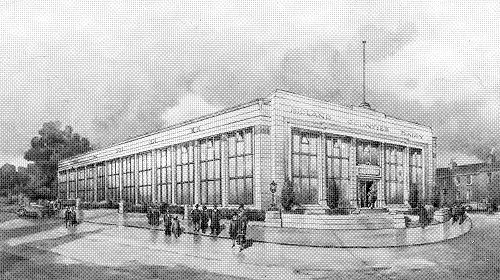
An artist's impression of the new
dairy on the corner of Lea Road and Penn Road.
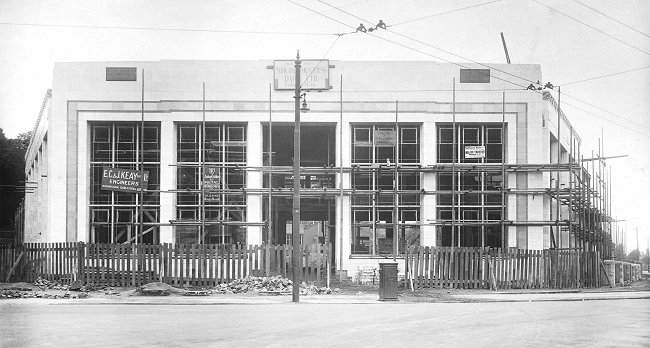
The dairy under construction.
Penn Road Dairy was built in 1930-1931 by William Sharratt
Limited of Church Road, Wolverhampton. The structural
steelwork was supplied by E. C. & J. Keay Limited of
Darlaston. The
Penn Road dairy opened its doors for the first time on 6th
May, 1931 at the junction of Penn Road and Lea Road. The
project had been personally supervised by Mr. Arthur White,
James White’s son. The building was officially opened by J.F.
Blackshaw, O.B.E. (Dairy Commissioner for the Ministry of
Agriculture) and Councillor J. Haddock, J.P. (Mayor of
Wolverhampton). |
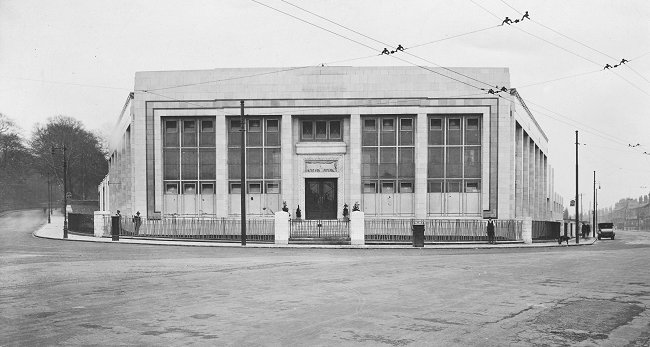
The new dairy.
| The new building, designed by Ewen Harper, Brother &
Company of Birmingham would become one of the most
recognised landmarks on the southern side of Wolverhampton.
The building was erected by William Sharrett Limited of
Wolverhampton, and about 30 subcontractors provided the
structural steel work, stone work, glazed terracotta,
timber, storage tanks, windows, staircases, plumbing,
electrics, etc. The materials used in the construction
included 350,000 bricks, and 5,500 square feet of
terracotta. The total floor space amounted to 21,000 square
feet.
The Dairy in 1931 |
|

The magnificent front entrance. |
The inside rooms were finished in cream glazed terracotta
with a yellow and blue decorative scheme. The special panel
over the front doors depicting two cows was especially
designed and modelled in terracotta.
To the right of the entrance hall stood a state of the
art pasteurising plant with machines for filling and capping
the bottles of graded and pasteurised milk.
To the left of the entrance hall stood the bottling plant
for sterilised milk, using a machine that could fill 100
bottles per minute. The bottle washing machines for
thoroughly cleansing and sterilising bottles were some of
the best in the world. The steriliser, one of the largest in
the world, not only automatically sterilised the milk in
bottles, but also cooled it ready for distribution. |
|
Automatic bottle conveyors carried the empty bottles from
the washing machines to the filling and capping units, and
then to the cold store and the loading department. The
main staircase led to the visitor's reception room and the
gallery, from where much of the dairy could be viewed.
The lecture room and laboratory could be found at the end
of the gallery. Here the incoming milk was regularly tested
by bacteriological experts to ensure that the dairy's high
standards of quality were met. Advice could also be given to
suppliers. At the opposite end of the gallery were the
staff dining rooms and the kitchen. |
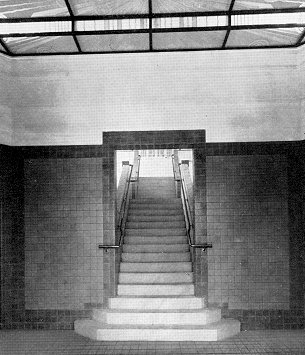
The entrance hall. |
|
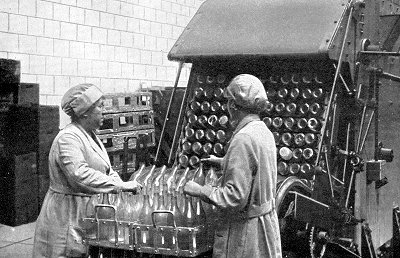
Loading a bottle washing machine. |
To the right of the rear yard were the stables which
could accommodate 20 horses, and on the left was the boiler
house with its two high pressure steam boilers and a steam
pump which delivered water for cooling and washing purposes,
from a 650ft. deep artesian well. |
| On the eastern side of the yard was the garage which
housed the company's fleet of motor vehicles including 2
road tankers for the collection of milk, 50 motor lorries,
90 horse-drawn lorries, 160 hand trucks, and a large number
of tricycles used for the delivery of ice cream. |
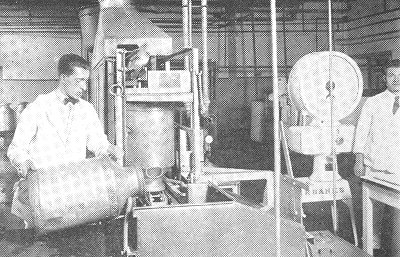
Tipping and weighing milk. |
|

Milk churns being unloaded. |
At this time the dairy delivered milk to Wolverhampton
and much of the surrounding area, including:
Bilston, Darlaston, Dudley, Walsall, Wednesbury, and
Willenhall.
There were branch depots at Dudley and Walsall. |
| 6,000 school children were supplied with Grade A milk,
representing over one million bottles a year.
Farmers were paid a bonus for clean milk as a way of
raising the quality of the milk sent to the dairy. |
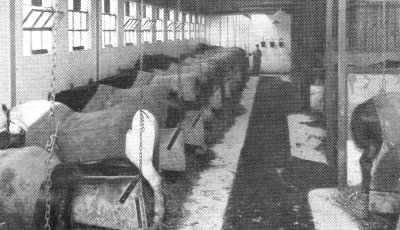
The stables. |
|

Miss K. L. Lomax at work in the
laboratory. |
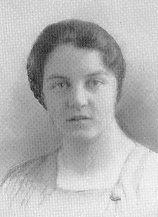
Miss K. L. Lomax,
N.D.D., B.D.F.D. |
| The laboratory carried out over 12,000 tests per year
and a monthly list was compiled to produce a record of the
farmers in order of merit.
The first 15 farmers received one penny per gallon above
the usual price for their milk and the next 30 received an
extra halfpenny per gallon. |

The pasteurising plant. |
|

A Milk tanker. |
The payments amounted to several thousand pounds each
year and insured that 90% of all of the dairy's products
conformed to the Government's standard for Grade A milk. |
| In 1931 the company was awarded a
silver challenge cup for the best ice cream in Great Britain
and Ireland at the Dairy and Ice Cream Exhibition at
Olympia. |
 |
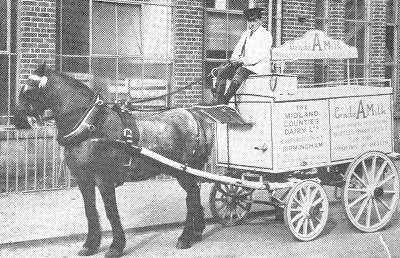 |
One of the company's horse-drawn
delivery vehicles. By 1934 there were over 250 roundsmen at
Wolverhampton dairy. |
|
One of the early
electric milk floats. |
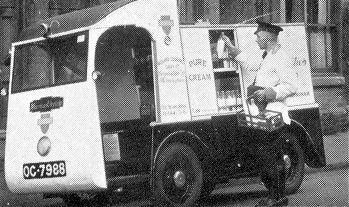 |
| |
|
| Read excerpts from the manual
for milk salesmen |
 |
| |
|
| Company Directors in the Early
1930s: |
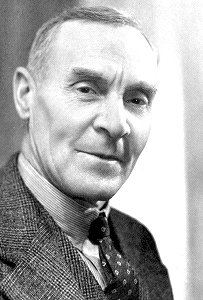
Edwin White. |
|
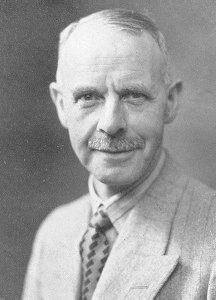
James G. White. |
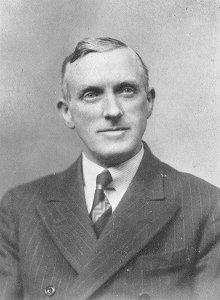
Harry A. White. |
|
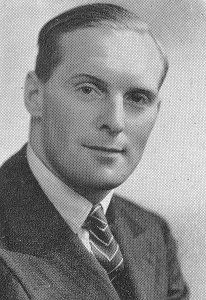
James White. |
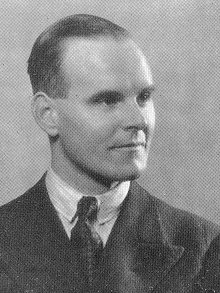
R. Fred White. |
|
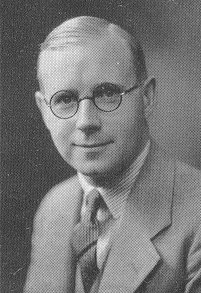
Arthur White. |
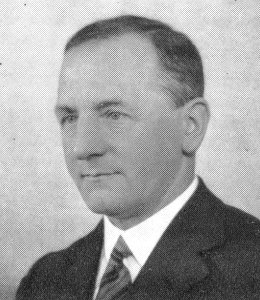
William M. Hood. |
|
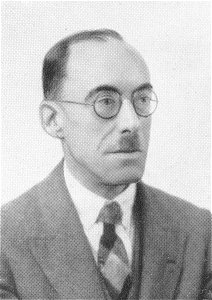
J. Austin Birch. |
| Some Members of Staff in 1934: |
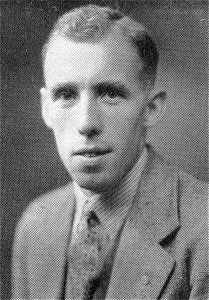 |
Mr. J. E. Birch.
Works Manager at Wolverhampton dairy. |
| Mr. J. Willis. Supervisor of the
Sales Department. He started
with the company in 1914 when there were just three
roundsmen in Wolverhampton. His main hobby was gardening. |
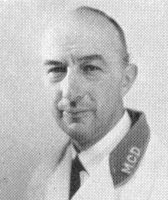 |
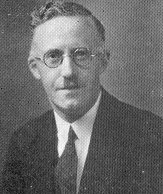 |
Mr. H. Smith. Supervisor.
He began working for the company at
Forest Gate, Birmingham in 1907 and came to Wolverhampton
after the First World War. |
| Mr. A. Woollaston. In charge of
the Grade A Department. He
started as a boy on the waggons with White Brothers and
later joined the dairy to work in the Sterilised Milk
Department. |
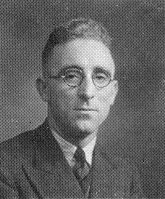 |
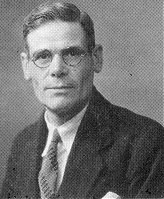 |
Mr. R. G. Roberts. Salesman.
Bob started with the company after
leaving school and began his first milk round in Blakenhall
where he was known by the children as "Uncle Bob". |
| Mr. F. G. Haynes. Salesman.
He joined White Brothers at Stratford
in 1909 and was engaged in brewing for 8 years. After the
First World War he started as a salesman in Wolverhampton.
His hobbies were listening to the gramophone and the
wireless. |
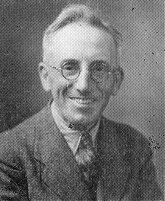 |
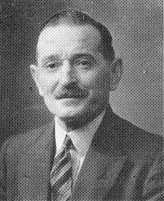 |
Mr. G. Gough. Had worked for White
Brothers and the dairy.
He started working for White
Brothers in 1903 and later moved to the Bottle Washing
Department at the dairy.
He had returned to White Brothers
by the time the new dairy had opened. |
| Mr. T. Green. Sales Supervisor.
He began to work for White Brothers in
1904 and started as Sales Supervisor at the Wolverhampton
dairy in 1928. He was also Honorary Secretary at the dairy's
Social Club, formed in 1926. |
 |
 |
|
 |
|
 |
Return to
Early Years |
|
Return to the
beginning |
|
Proceed to Penn Rd Dairy |
|